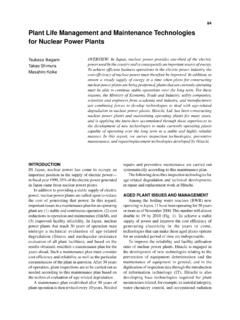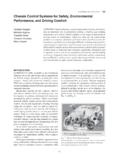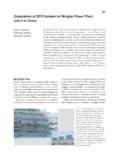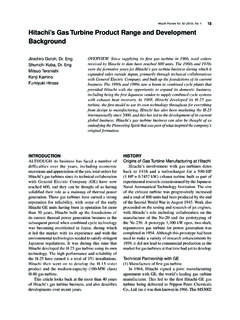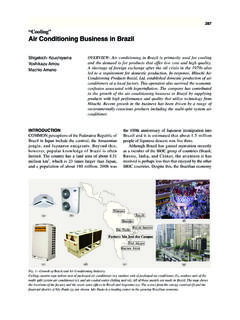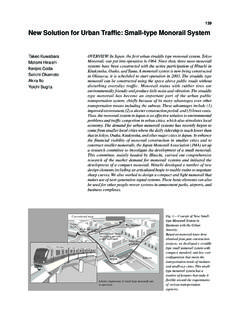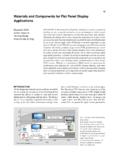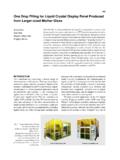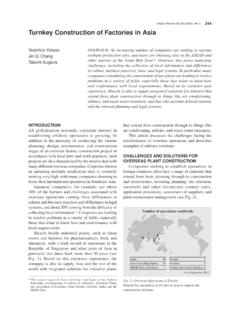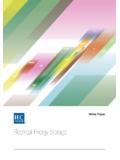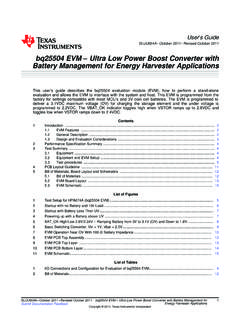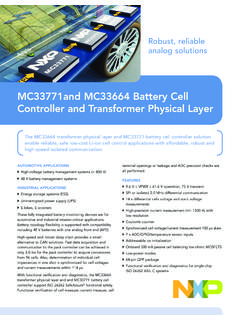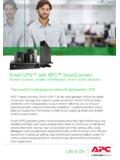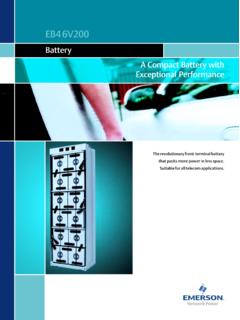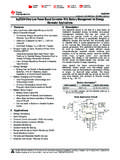Transcription of Energy Storage for Traction Power Supply Systems
1 Energy Storage for Traction Power Supply Systems 28 Energy Storage for Traction Power Supply SystemsHirotaka TakahashiTetsuya KatoTomomichi ItoFujio GunjiINTRODUCTIONWE have seen increasing demand in recent years fortraction Power Supply Systems that are moreenvironmentally friendly, Energy efficient, and have asmaller footprint. Particularly the growing worldwideconcern over global warming calls for innovative newapproaches that achieve significantly greater energysavings than in the past. As a responsible global citizencommitted to the reduction of greenhouse gases,Hitachi has developed a regenerative Power absorbingequipment using batteries called B-CHOP forapplication to the same lithium-ion (Li-ion) batteriesused in hybrid drive vehicles, and the system is nowup and running at various sites.
2 This paper providesan overview of the system shown in the photograph inFig. 1, and gives a brief description of engineeringtools used to tailor the system to different BACKGROUNDB eginning in 1985 with the goal of mitigatingregeneration lapses, Hitachi developed firstregenerative inverters, then a regenerative powerabsorbing equipment using resister, and deployed thesesystems in Traction substations. Table 1 reveals thatthese Systems have had different strengths andweaknesses, and it was our objective to combine thestrengths of the two earlier approaches with this morerecent work to develop a regenerative Power absorbingequipment using batteries that provides significantenergy-saving benefits.
3 The system proved effectivenot only for preventing regeneration lapses bystabilizing feeder voltage levels, but also for mitigatingvoltage sag, thus improving train accelerationperformance. Stabilizing the feeder voltage alsostabilizes the regenerative brake Power that enablesmore precise stopping and can reduce wear ofmechanical brake shoe. Fig. 2 shows a schematicOVERVIEW: Environmental considerations have been factored into thedevelopment of Traction Power Supply Systems in the past, but growingconcerns about global warming call for even more innovativeenvironmentally friendly system solutions.
4 Now Hitachi, Ltd. has developeda novel regenerative Power management system that efficiently uses storedregenerative train Energy by adopting the same lithium-ion batteries usedin hybrid drive vehicles, and the system is now poised for practicaldeployment. The system mitigates voltage drop across the feeder problemswith the stored Energy when trains are powered, and also effectively reducespeak Power demand. A Traction Power simulator is used to access andconfigure the optimum system before the regenerative Power managementsystem is actually 1 Photo of the Regenerative Power Absorbing EquipmentUsing Batteries in Operation (Kobe Subway, Seishin-yamateLine, Itayado Substation).
5 The units shown starting from farthest away to the left are thechopper panel (consisting of arrays of filter panels), the batterypanels, and the DC Review Vol. 57 (2008), No. 1 29overview of the benefits derived from applying theregenerative Power absorbing equipment SELECTIONR egenerative Power generated by trains has acharacteristic that it rises very precipitously. Thismeans that the key to choosing the right battery is thecharging characteristics when kinetic Energy is beingrecovered and the discharging characteristics when theTABLE 1. Comparison of Regenerative SystemsComparison of regenerative inverter, resistor type regenerative Power management system , and regenerativepower absorbing equipment using 2 Overview of RegenerativePower Absorbing Equipment regenerative Power absorbingequipment using batteriesincorporates the strengths of boththe regenerative inverter and theregenerative Power absorbingequipment using scheme (utilizes regenerative Power )Can be used to mitigate voltage dropInstallation sites limitedRequires supplementary equipment?
6 Contribution to Energy savings12345 Regenerative Power consumed by resistor as heat. Regenerative Power can t be used.(No)(No)Can be installed in sites with frequent regeneration lapses.(No) Regenerative Power consumed as heat Energy saving effects: NoRegenerative Power stored in batteries. Stored Power reused as Traction Power .(Yes)Stored Power supplied as Traction Power (No)Can be installed in sites with frequent regeneration lapses or sites where voltage drops occur.(No) Regenerative Power used as Traction Power Energy saving effects: SubstantialRegenerative Power uses secondary load from AC system .
7 (No)(Yes)Substations equipped with distribution equipment(Yes) Inverter transformer Harmonic filter Phase-advance capacitor Regenerative Power applied to distribution loads, etc. Equipment losses: Comparatively large Energy saving effects: YesRegenerative absorbing equipmentusing resistor systemRegenerative Power absorbing equipmentusing batteries (developed in this work)flow of Energy is reversed. After comparing variouskinds of rechargeable batteries and compiling data ontheir service life and other characteristics, we settledon Li-ion batteries. Compared with electric double-layer capacitors and NiMH (nickel-metal hydride)batteries, Li-ion cells have higher Energy and powerdensities, and are smaller and much lighter.
8 In short,Li-ion cells are superior to other equivalent secondarybatteries, they are manufactured for applicationsdemanding rapid frequent switching back and forthRegenerative energyPowering energyPlatform doorStabilization of feeder voltageRegenerative Power absorbingequipment using batteriesSurplus regenerative Energy is stored (for use as powering Energy ).Stable regenerative brake powerReduced mechanical brake frictionSecondary batteries recover surplus regenerative Power (more effective use of Power ). Prevents voltage rises. SpecificationsPrevents voltage savingsStation buildingSame type of Li-ion batteriesused in hybrid vehicles Rated capacity: 2,000 kW 20 s operation at 180 s cycle Rated voltage: DC 1,500 V, 750 V, 600 V Switching frequency: 600 Hz, 720 Hz Twenty 4-series-connected Li-ion batteries connected in parallelReduces railcar maintenance railcar acceleration regeneration stopping point Storage for Traction Power Supply Systems 30 Circuit ConfigurationFig.
9 4 is a circuit diagram showing that the B-CHOP system consists of three blocks: the chopper panel,filter panel, and battery panel. A key advantage of thesystem is that there are no restrictions on where it hasto be deployed so it can be installed virtually chopping frequency of the B-CHOP is the sameas that of the regenerative Power absorbing equipmentusing register with which we have a good deal ofexperience, and the ripple of the 12-pulse rectifier isstandardized at 600 Hz for the 50-Hz domain and 720Hz for the 60-Hz domain. These frequencies can bereadily modified even in the presence of interference,so B-CHOP seamlessly interworks with other charge and discharge, and they are ideal foraccommodating the loads of electrified in material science have extended theservice life of Li-ion batteries, so there is no practicalproblems with using the batteries continuously for15 years or more under the environment and loadconditions prevailing in Traction substations.
10 Fig. 3is a photograph of the general-purpose Li-ion batterymodule used in our system , which is essentially thesame type of module used in hybrid drive about the environment and the market forhybrid vehicles will only continue to grow in the yearsahead, and this will drive down the cost of Li-ionbatteries as the manufacturing economy of scalecontinues to SPECIFICATIONS ANDAPPLICATIONSB-CHOP SpecificationsLet us briefly summarize the key specifications ofthe commercial version of the regenerative powerabsorbing equipment using batteries B-CHOP :(1) Rated capacity: 2,000/1,000/500 kW (20 secondoperation at 180 second cycles)(2) Rated voltage: 1,650 V/820 V (note however thatthe voltage varies at beginning of charging anddischarging.)
